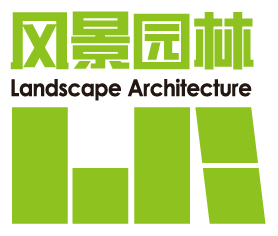Abstract:
Objective As cities enter the stage of stock optimization from expansion, improving urban quality and fostering harmonious coexistence between humans and nature have emerged as pressing priorities. Garden City construction, proposed by the capital, aims to systematically strengthen ecological resilience, improve public space quality, and raise residents’ satisfaction, forming a high-quality model integrating people, urban environment, industry, and green infrastructure. The “triple greening” approach — scientific greening, landscape colorization, and spatial verticalization — provides the technical foundation, driving urban transformation from gray to green spaces, two-dimensional to three-dimensional spaces, and closed to open spaces. Additionally, Garden City initiatives emphasize cross-departmental governance and multi-stakeholder collaboration. However, challenges remain, including limited public space resources with low utilization, unclear spatial ownership with fragmented responsibilities, and weak management and maintenance due to insufficient expertise and funding, all affecting construction quality. Therefore, developing an action framework and construction pathways grounded in the triple greening concept is vital to ensure effective implementation of Garden City projects.
Methods/process This research employs a combined approach of policy review and empirical synthesis to systematically analyze national and Beijing municipal policies and practical experiences related to Garden City construction. Focusing on the core questions of “where to construct”, “who constructs” and “how to construct” garden spaces, the research develops an action framework based on the dimensions of space, actor, and function. The spatial dimension challenges the conventional perception of green space as limited to parks, expanding it to include parklands, gray infrastructure, and vertical building spaces as potential sites for garden development. The actor dimension clarifies the roles and collaborative relationships among government bodies, enterprises, communities, and the public across the full lifecycle of planning, construction, and maintenance, emphasizing multi-stakeholder participation. The functional dimension highlights the multifunctional roles of green spaces, including ecological regulation, aesthetic enhancement, public health promotion, and community governance, supported by corresponding technical strategies and institutional mechanisms. Based on this framework, and guided by the “triple greening” technical system, several pathways for Garden City construction are proposed from four dimensions: ecological foundation, city – garden integration, management models, and co-governance mechanisms.
Results/conclusion Four pathways for Garden City construction are proposed. 1) Establish a resilient ecological foundation. This pathway prioritizes optimizing ecosystem services and conserving biodiversity by integrating water bodies, green corridors, and urban forests into interconnected ecological networks. The use of native species, low-maintenance practices, and near-natural succession enables diverse urban spaces to support climate-resilient systems. 2) Promote city – garden integration and spatial openness. By enhancing greening quality, spatial verticalization, and colorized urban interfaces, this approach advances the ecological transformation of gray infrastructure. Mechanisms such as “de-fencing” and time-sharing access models enable shared green spaces and equitable access across communities. 3) Improve multi-level collaborative governance. A three-tier governance model, comprising municipal coordination, interdepartmental collaboration, and grassroots implementation, is established to ensure accountability across planning, construction, and maintenance. Digital tools and intelligent management systems are adopted to support full lifecycle governance of green infrastructure. 4) Innovate participatory co-construction mechanisms. A multi-actor engagement model is proposed involving government leadership, enterprise support, community co-building, and public participation. Through adoption programs, ecological education, and digital empowerment platforms, residents are encouraged to become active stewards in sustainable urban greening. The research demonstrates that advancing Garden City construction depends not merely on expanding green space quantitatively but on achieving a systematic transformation integrating shared understanding, coordinated spatial planning, and collaborative governance. Moving forward, Garden City development should be pursued as a comprehensive spatial quality enhancement strategy that extends beyond traditional green spaces to encompass streets, vertical interfaces, and gray infrastructure, embedding and functionally coupling green elements within the urban fabric. Moreover, the focus should shift from an exclusive emphasis on landscape aesthetics toward highlighting the multi-functional value of green spaces in enhancing ecological resilience, mitigating urban risks, and improving public welfare. Through sustained multi-actor collaboration and institutional innovation, Garden City can evolve from conceptual visions to high-quality, scalable realities. The proposed “space – actor – function” framework offers strong theoretical and practical guidance, demonstrating high local adaptability and replicability, and has the potential to significantly advance urban green transformation and contribute to ecological civilization under the new paradigm of sustainable urban development.

 下载:
下载:
